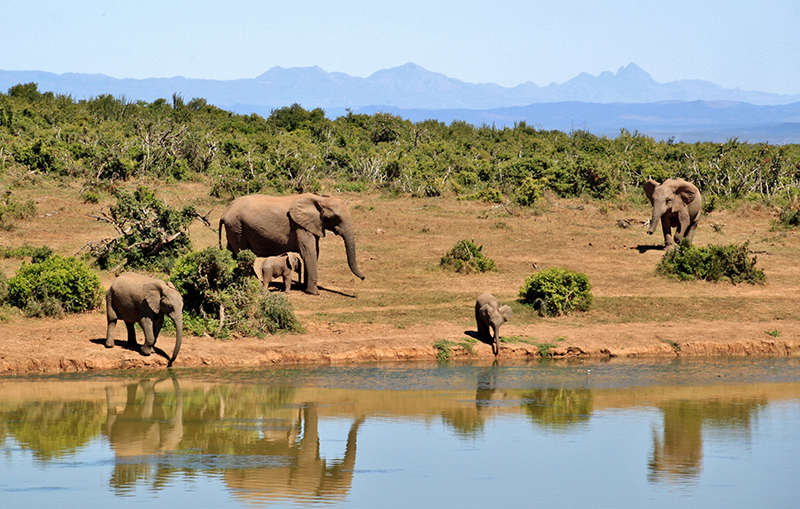The illicit trafficking of wild flora and fauna is a crisis on a global level and considered a World Crime by the United Nations, however it has deviously infiltrated the European Union extensively over the years. Illegal behaviour towards wildlife, which may include poaching, hunting, trapping and unnecessary killing for instance, results in biodiversity loss since it contributes to the endangerment and extinction of one entire species. It weakens wild populations drastically and disrupts food chains beyond despair.
Besides the negative environmental impact that criminal wildlife trafficking entails, it also has destructive socio-economic consequences, depriving social communities of sustainable forms of income, loss of employment opportunities, and a more limited food availability and variety. Moreover, further and more varied diseases which spread between animals and humans will increase, leading to more potential public health devastations, as we have seen with the recent pandemic in 2020.
Consequently, and importantly so, on the 10th of November 2022, the European Commission adopted a revised EU Action Plan holding stronger measures against the concept of wildlife trafficking, as originally sought out in the Biodiversity Strategy for 2030.
The Adopted EU Action Plan Explained
The plan consists of four strategies to tackle concepts of wildlife trafficking prevention, strengthening the legal and policy framework against trafficking of wildlife, enforcement of regulations to effectively combat wildlife and finally strengthening the global partnership of source, consumer and transit countries against trafficking.
The first priority would be to reduce consumer demand for illegally traded wildlife within the EU, such as pangolins (which are known for their meat and unique scales), tiger and leopard skin, elephant ivory and rhino horns, among others. This would instead support sustainable livelihoods in extant counties and tackle wildlife corruption in many sectors. Secondly, reliable collected evidence on the subject will aid to improve and align EU policies and national laws with international commitments, especially those business sectors which are involved in wildlife trade.
Thirdly, the rate of detention of illegal activities within the EU must improve greatly and this may be done through more focus on better coordination and cooperation between Member States, and increased efforts of tackling online wildlife trafficking too. Fourthly, one must not rule out the role of key non-EU countries which have a more demanding role to combat this issue and other enforcement actors.
Combatting Wildlife Trafficking beyond the EU
The EU Action Plan to prevent Wildlife trafficking in the EU was proposed a week prior to the 19th CITES[1] meeting of the Conference of the Parties (COP19), which was held in Panama City, Panama, from the 14th to the 25th of November of this year. Essentially, the concept of sustainable trade was kept at the forefront of discussions and many proposals were put forward to review current international trade legislation on specific species of animals and plants, depending on gathered reviews and reports of wildlife crime, and emphasising better protection to the relevant species, as deemed necessary.[2]
Wildlife trafficking will also be directly tackled at the United Nations Biodiversity Conference (COP15), taking place this week, until the 19th of December 2022, in Montreal, Canada. The aim is to reach a global agreement for long-term protection, restoration, and sustainable use of the biodiversity and ecosystems. Discussions on more ambitious, comprehensive and transformative frameworks related to biodiversity are a must, whilst keeping in mind a long-term, post-2020 target. Negotiations on the topic will include, among others, the protection of 30% of land and oceans until 2030, restoring 3 billion hectares of land, and ocean and freshwater ecosystems, and addressing further the most destructive drivers of biodiversity, specifically pollution and deforestation. In this regard, the EU has increased its biodiversity financing to 7 billion euro until the end of 2027, with an ambition to emphasise biodiversity and wildlife conservation and sustainable usage.
Concluding remarks
“The EU is a hub for global wildlife trafficking and has a key role to play in the fight against it”
Source: European Commission – Press release on Biodiversity: Stronger measures against wildlife trafficking- Brussels, 10 November 2022
Besides the Adopted Action Plan on Wildlife Trafficking, the EU has tackled the issue through other important legislation. Wildlife trade and dealing within the EU, and from and to the Union, is mainly regulated through a set of Regulations, primarily implementing principles introduced through CITES[3]. Additionally, other EU Regulations and Directives, such as The Habitats Directive[4], the Birds Directive[5], the Zoos Directive[6] and the Invasive Alien Species Regulation[7], prohibit the sale and transport of a number of strictly protected wild species within the EU.
It is hopeful to observe how the EU is, once again, leading by example, in confronting the issue of wildlife trafficking headfirst, even if it seems to be less of a considered issue within the Union. It will be interesting to not only observe how the EU Action Plan will play out over the coming years, but also to monitor the discussions which take place at the COP15[8], with what contributions the EU is willing to offer in this regard, and what legislative recommendations it will put forward, to further tackle wildlife trafficking, at such a dignified international meeting.
[1] Convention on International Trade in Endangered Species of Wild Fauna and Flora – a global policy helping to fight the extinction crisis through wildlife trade regulations, which advocates for the sustainable use of wildlife and conservation of wild species
[2] More information may be accessed here
[3] Currently these are Council Regulation (EC) No 338/97 on the protection of species of wild fauna and flora by regulating trade therein (the Basic Regulation), Commission Regulation (EC) No 865/2006 laying down detailed rules concerning the implementation of Council Regulation (EC) No 338/97 (the Implementing Regulation), and Commission Implementing Regulation (EU) No 792/2012 of 23 August 2012 laying down rules for the design of permits, certificates and other documents provided for in Council Regulation (EC) No 338/97 on the protection of species of wild fauna and flora by regulating the trade therein and amending Regulation (EC) No 865/2006 (the Permit Regulation)
[4] Council Directive 92/43/EEC of 21 May 1992 on the conservation of natural habitats and of wild fauna and flora
[5] Directive 2009/147/EC of the European Parliament and of the Council of 30 November 2009 on the conservation of wild birds
[6] Council Directive 1999/22/EC relating to the keeping of wild animals in zoos
[7] Regulation (EU) No 1143/2014 of the European Parliament and of the Council of 22 October 2014 on the prevention and management of the introduction and spread of invasive alien species
[8] More information may be accessed here








